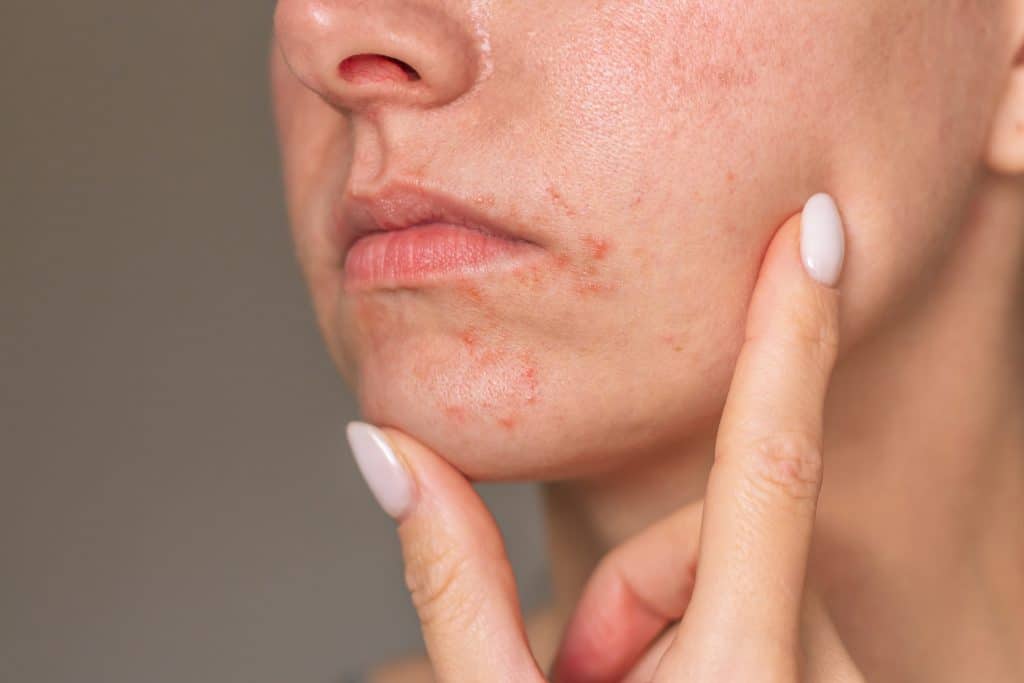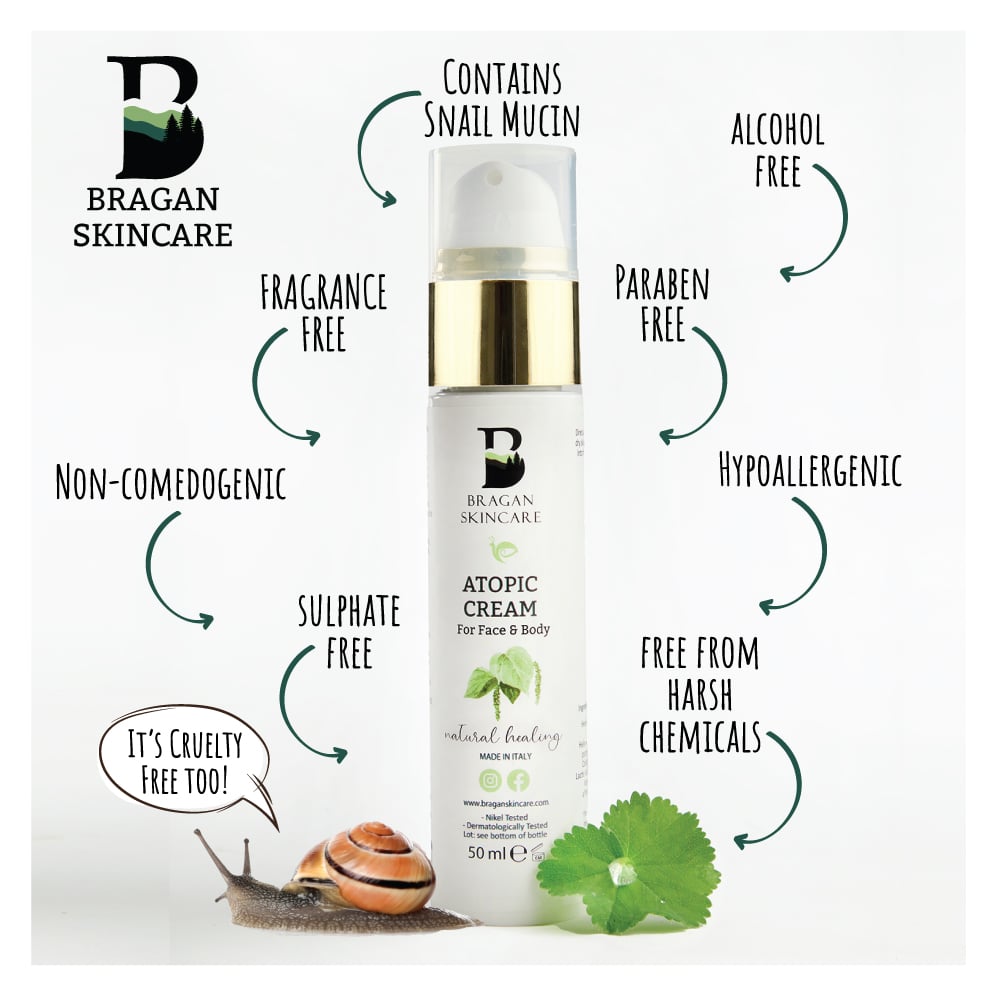How to treat perioral dermatitis at home
Perioral Dermatitis — Definition
Perioral dermatitis (also called periorificial dermatitis) is a red, bumpy rash that appears around the mouth and can extend to the nose and eyes. Skin may feel tight, sore, stingy or itchy, with small raised bumps and dry, flaky patches. It isn’t contagious. A gentle routine, trigger avoidance and consistent care usually help it settle over time.

At a Glance
What Helps: Treat perioral dermatitis at home.
- Gentle, fragrance-free cleanser
- Light, non-comedogenic moisturiser
- Mineral sunscreen (zinc oxide)
- Simple routine (no scrubs, no strong actives)
- Patch test new products
What to Avoid
- Topical steroid creams on the face (unless advised by a medical professional)
- Harsh exfoliators and alcohol based toners
- Heavy, oily occlusives that trap heat
- Long-wear makeup during flares
- Possible triggers: certain toothpastes, cold wind, stress
Causes & Triggers
- Recent or long periods of topical steroid use on the face
- Irritating skincare (fragrance, alcohol, harsh cleansers, over-exfoliation)
- Toothpaste sensitivity (some improve with fluoride-free trials)
- Hormonal shifts (cycle changes, pregnancy, starting or stopping contraception)
- Environment (cold wind, heat, sudden weather changes)
- Microbiome disruption and skin barrier damage
Gentle Treatment: 5 Steps
- Stop irritants: Pause scrubs, peels, retinoids and alcohol-based toners.
- Cleanse softly: Use lukewarm water and a gentle, fragrance-free cleanser. Pat dry.
- Moisturise light: Apply a non-comedogenic, calming cream twice daily.
- Daytime protect: Use a light mineral sunscreen; reapply if outdoors.
- Be consistent: Expect gradual improvement over weeks, not days.
If you suspect toothpaste sensitivity, try a 4-week fluoride-free trial while maintaining good dental hygiene and consult your dentist/GP.
Patch-Test Guide: How to treat perioral dermatitis at home
- Apply a pea-sized amount behind the ear or along the jawline once daily for 2–3 days.
- Watch for stinging, intense redness or new bumps.
- If comfortable, begin on a small facial area for another 2–3 days, then expand.
When to See a Clinician
- Eye involvement, swelling or vision symptoms
- Signs of infection (oozing, crusting, fever)
- Severe pain or widespread flare
- Pregnancy or breastfeeding and unsure what’s safe
- No improvement after 6–8 weeks of gentle care
Why Bragan Skincare’s Atopic Cream
- Fragrance-free and formulated for sensitive skin
- Dermatology-informed approach to supporting the skin barrier
- Lightweight hydration that sits comfortably under mineral SPF
- Many users report their skin feels calmer and looks less red with consistent use
Individual results vary. Patch test recommended.
Ready to calm your skin—gently?
Shop Bragan Skincare’s Atopic Cream
Two-Week Gentle Routine
Morning
- Rinse or cleanse gently
- Apply Bragan Skincare Atopic Cream (thin layer)
- Apply mineral sunscreen
Evening
- Cleanse gently
- Apply Bragan Skincare Atopic Cream (thin layer)
- Skip strong actives until skin is consistently calm
FAQs
Is perioral dermatitis contagious?
No. It’s an inflammatory skin condition and doesn’t spread between people.
How is it different from acne or rosacea?
Perioral dermatitis often forms small red bumps around the mouth with burning or stinging. Acne typically has blackheads/whiteheads; rosacea often centres on cheeks and nose with flushing.
Does fluoride toothpaste cause perioral dermatitis?
Evidence is mixed. Some people improve after switching. If you suspect sensitivity, try a fluoride-free option for 4 weeks and consult your dentist/GP.
How long does healing take?
With a gentle routine and trigger control, some notice improvement within a few weeks. Timelines vary; consistency matters.
Author & Review
Author: Kieran Corley — Bragan Skincare
Last reviewed: 22 September 2025
References
- British Association of Dermatologists — Perioral/Periorificial Dermatitis
- Dermnetnz Periorificial Dermatitis
- Mayo Clinic — Dermatitis overview

Featured Bragan Skincare Products
-
€39.99 – €100.00Price range: €39.99 through €100.00Select options This product has multiple variants. The options may be chosen on the product page
-
€100.00Select options This product has multiple variants. The options may be chosen on the product page
